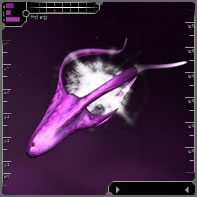A Solrain cargo convoy traveling through the Pulsar sector first encountered the Conflux. Needless to say this convoy was all but destroyed. Shortly after this incident, several more attacks took place - all within the vicinity of the Pulsar. Several squads gathered together and began to rip members of the Conflux. Debris was collected and handed over to TRI scientists.

Conflux kills continued to rise for several days, and many pilots spent countless hours in the cockpit attempting to rid space of this threat. Some daring pilots even managed to get close enough to scan members of the Conflux. It was noticed that several types of Conflux were active in space. Shortly thereafter all contact with the Conflux stopped.